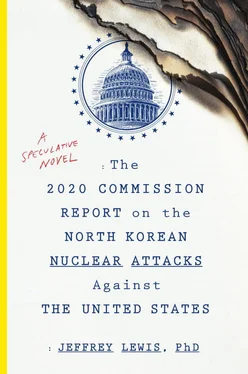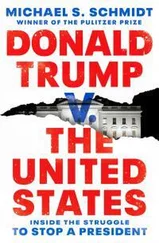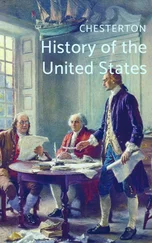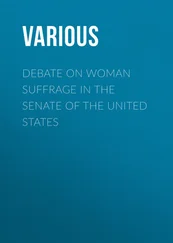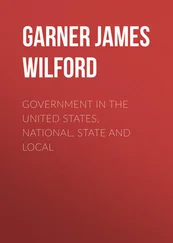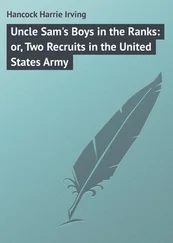Jeffrey Lewis - The 2020 Commission Report on the North Korean Nuclear Attacks Against the United States
Здесь есть возможность читать онлайн «Jeffrey Lewis - The 2020 Commission Report on the North Korean Nuclear Attacks Against the United States» весь текст электронной книги совершенно бесплатно (целиком полную версию без сокращений). В некоторых случаях можно слушать аудио, скачать через торрент в формате fb2 и присутствует краткое содержание. Город: New York, Год выпуска: 2018, ISBN: 2018, Издательство: Mariner Books, Жанр: Фантастика и фэнтези, Триллер, на английском языке. Описание произведения, (предисловие) а так же отзывы посетителей доступны на портале библиотеки ЛибКат.
- Название:The 2020 Commission Report on the North Korean Nuclear Attacks Against the United States
- Автор:
- Издательство:Mariner Books
- Жанр:
- Год:2018
- Город:New York
- ISBN:9-781-328-57391-9
- Рейтинг книги:4 / 5. Голосов: 1
-
Избранное:Добавить в избранное
- Отзывы:
-
Ваша оценка:
- 80
- 1
- 2
- 3
- 4
- 5
The 2020 Commission Report on the North Korean Nuclear Attacks Against the United States: краткое содержание, описание и аннотация
Предлагаем к чтению аннотацию, описание, краткое содержание или предисловие (зависит от того, что написал сам автор книги «The 2020 Commission Report on the North Korean Nuclear Attacks Against the United States»). Если вы не нашли необходимую информацию о книге — напишите в комментариях, мы постараемся отыскать её.
The 2020 Commission Report on the North Korean Nuclear Attacks Against the United States — читать онлайн бесплатно полную книгу (весь текст) целиком
Ниже представлен текст книги, разбитый по страницам. Система сохранения места последней прочитанной страницы, позволяет с удобством читать онлайн бесплатно книгу «The 2020 Commission Report on the North Korean Nuclear Attacks Against the United States», без необходимости каждый раз заново искать на чём Вы остановились. Поставьте закладку, и сможете в любой момент перейти на страницу, на которой закончили чтение.
Интервал:
Закладка:
US and South Korean officials did, of course, visit the headquarters of the ROK Army Missile Command in Eumseong County from time to time. Even so, the South Korean military emplaced security measures to conceal the location of this unit, and its precise location was never mentioned in South Korean press reports. When VIPs visited, the location was never described. The main headquarters was also obscured with digital trees in the apps Naver and Daum, South Korea’s versions of Google Maps. Army Missile Command’s soldiers were even required to remove their unit patches, fixed to their sleeves with Velcro, before any photograph could be taken.
On March 21, Major General Lee Jin-won was sitting in his office at the main Army Missile Command outpost when, at 1:42 PM, his secure phone rang. It was President Moon’s staff, informing him that the president wanted to speak with him and that he would soon be in charge of launching a counterstrike. As soon as the call ended, Major General Lee gathered his aides and went into the underground bunker behind the main administrative building.
Photographs from that day show that Major General Lee wasn’t wearing his patch. According to officers under his command, the unit was preparing for yet another VIP visit in a few weeks. The unit was regarded as a “spit-and-polish” unit, although this was largely a function of seemingly endless VIP visits that constantly disrupted training and wreaked havoc on any effort to establish a regular schedule. As Lee walked into his command bunker, the only evidence that he commanded an arsenal of long-range missiles was his dark blue baseball cap with an interlocking A-M-C. The cap was a security violation, but only a very well informed outsider would know what those letters stood for. Most South Koreans did not.
According to transcripts provided by the South Korean Army, in the short teleconference that followed, President Moon directed General Lee to develop a plan to strike L-01, the Kim family compound, as well as the North Korean Air Force headquarters in Chunghwa, with the minimum number of missiles. Moon left it to Major General Lee to determine which units would carry out the strike. All he asked was that the number of missiles be kept to the minimum necessary. He did not want Kim Jong Un to think this was the start of a war.
Major General Lee asked President Moon about his obligation to notify his American counterpart. “General Lee hesitated about taking military action,” explained Lee’s assistant. “He said the plan required him to consult with the Americans. President Moon said that he would take responsibility to inform the Americans. [Major General Lee] seemed uncertain for a moment, but ultimately agreed to follow the order.”
A significant question is why Major General Lee followed President Moon’s directive to disregard established procedures for consultation and ordered South Korean units to launch without informing US Forces Korea, as dictated in contingency plans that had been agreed between Seoul and Washington. The answers offered by officers from the Army Missile Command vary: some blamed Washington, and others observed that in a serious crisis the interests of even close allies may differ. All agreed, however, that the Americans had been slow to recognize that South Koreans no longer saw themselves as junior partners in the defense of their own country and its citizens.
South Koreans of all political stripes had long been irked that, in the event of another war, they would have to surrender control of the country’s military forces to the Americans—the same arrangement that had existed during the Korean War so many decades ago. The humiliation of this arrangement was driven home in November 2017, when South Korean forces had not even been allowed to return fire as North Korea fired heavy weapons across the DMZ to stop the defection of a North Korean soldier. Moon had expressed his frustration with these constraints. “The issues on the rules of engagement… should be discussed, although it is under the [United Nations Command’s] control,” President Moon publicly said. “The people would generally think of a rule of engagement as something that permits our soldiers to at least fire warning shots if a bullet from the North Korean is fired at us.”
On March 21, those frustrations helped drive the crisis forward. The military officials who opposed the strike tried to do so by suggesting that they consult with the Americans. And those who supported the strike wanted to avoid telling the Americans and deal with the consequences later.
Crucially, the officer responsible for actually carrying out the counterattack found himself much closer in his views to the latter camp. Major General Lee saw the choice starkly: following the consultation procedures outlined in the contingency plan would simply result in American pressure to do nothing. “The Americans were just going to tell us no, and we knew that,” his assistant explained. “They said no in 2010. They dragged their feet when we asked for wartime control of our own forces. They came up with reasons why we couldn’t use our rules of engagement in the DMZ. It was always ‘no,’ or ‘maybe later,’ or ‘be reasonable.’ Think of all those dead kids. What’s a reasonable response to that?”
Moreover, in the end, President Moon was Major General Lee’s commander. Whatever ties of professional respect bound Lee to his American counterparts, he was a Korean officer, not an American one. “I think sometimes you know there are rules, but this is still your country,” explained his deputy. “Those students were Korean. President Moon was our commander. We followed his order.”
Major General Lee selected two units to conduct the attack, one based in central Korea near Wonju and the other on the far western edge of Baengnyeong Island. He ordered his staff to prepare an attack plan that would be ready to execute within about six hours—at 8:00 PM. This launch time would enable the missile launch units to conduct their launch preparations under the cover of darkness—and also give the president a chance to change his mind.
President Moon had no intention of changing his mind. Nor did he have any intention of informing the Americans, let alone asking for permission. When Moon learned that the attack would be ready at 8:00 PM, he asked his aides to schedule an address to the nation from the press hall, known as the Chunchugwan, located on the Blue House grounds. He also instructed them to not take any calls from the Americans. “[Moon] thought American officials might try to restrain us,” Chief of Staff Im explained. “Trump could learn about the strike the same way that everyone else did—when it was announced on television.”
Moon’s remarks that night were brief enough. He stated simply that North Korea had shot down a civilian airliner, one filled largely with children. He said that the attack “crossed all lines of human decency” and described North Korea’s claim that the aircraft was on a reconnaissance mission as a “pathetic lie.” He expressed his profound grief over the loss of so many innocent lives, over the pain their families were suffering, and over the senselessness of North Korea’s crime. And then he announced that military operations had begun:
“As I speak, Republic of Korea armed forces are responding to this cruel and unjust act. Our grief at this moment knows no bounds. But our response does, as it has been carefully limited to those responsible for perpetrating this horrible crime. The armed forces also stand ready to expand our operations if North Korea persists in attacking our citizens.”
When his remarks were finished and the television cameras were turned off, Moon walked back down to the Crisis Room and asked his staff to place a call to the White House. Now that the strike was under way, Moon wanted his national security adviser to smooth things over. At this point, Moon and his advisers were mainly worried about the American reaction, not the North Korean one. They worried that the Trump administration would be angry about not having been consulted, but they also assumed that US leaders would fall into line now that the counterstrike, a limited operation, was a fait accompli . None of Moon’s surviving aides appear to have believed that the strike would escalate into a general war. The targets had been carefully selected, the number of missiles was small, and Moon’s speech had made clear that he was holding the full strike in reserve.
Читать дальшеИнтервал:
Закладка:
Похожие книги на «The 2020 Commission Report on the North Korean Nuclear Attacks Against the United States»
Представляем Вашему вниманию похожие книги на «The 2020 Commission Report on the North Korean Nuclear Attacks Against the United States» списком для выбора. Мы отобрали схожую по названию и смыслу литературу в надежде предоставить читателям больше вариантов отыскать новые, интересные, ещё непрочитанные произведения.
Обсуждение, отзывы о книге «The 2020 Commission Report on the North Korean Nuclear Attacks Against the United States» и просто собственные мнения читателей. Оставьте ваши комментарии, напишите, что Вы думаете о произведении, его смысле или главных героях. Укажите что конкретно понравилось, а что нет, и почему Вы так считаете.
